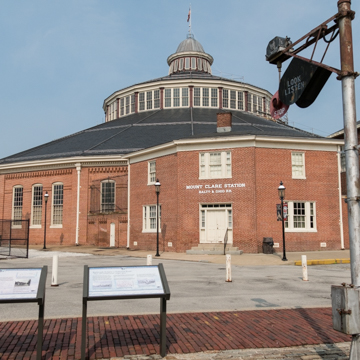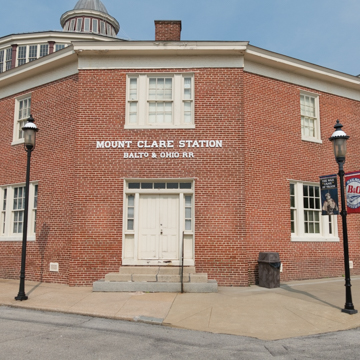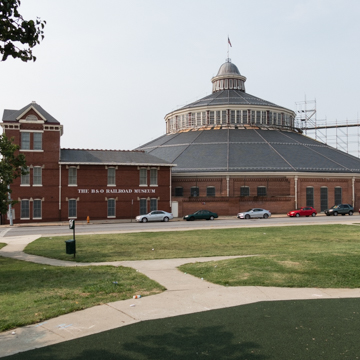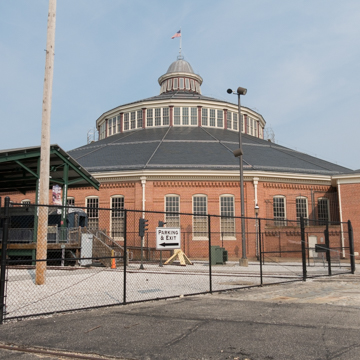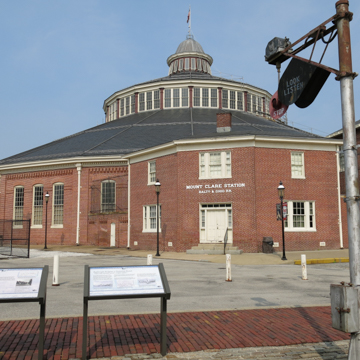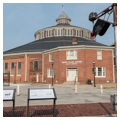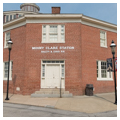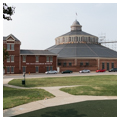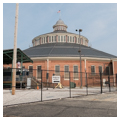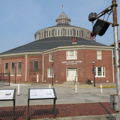The B&O Museum encompasses what remains of the oldest and most fully integrated railroad manufacturing complex in the United States, if not the world. Established in 1829 as the B&O Mount Clare Station and Railroad Shops, it is recognized as the birthplace of American railroading. It was the site of such innovations in railroading technology as the American steam locomotive pioneered by Ross Winans and Phineas Davis and the first iron railroad bridges in groundbreaking designs by Wendel Bollman. At its height the B&O shops produced everything from steam locomotives, freight and passenger cars, and bridges to hardware and building components used throughout the system. The first long-distance passenger and freight railroad service in the world left here for its initial run along the thirteen-mile line to Ellicott City on May 22, 1830.
The shops began in 1829–1830 as a carriage repair shed and stable (the first cars were pulled by horses). A forge and a machine shop were added in 1833, and by 1834 the first steam-powered locomotives were under production. After the Civil War a foundry, blacksmith shop, and office building were added. At its 1920s height, the shops stretched ten city blocks, turning out an average of eighteen new or rebuilt locomotives per week, with a workforce of about three thousand. The last steam locomotive was manufactured here in 1948, and on July 4, 1953, the 125th anniversary of the laying of the cornerstone of the original tract, the B&O Railroad Museum opened. It comprises one of the most significant collections of historic railroad equipment and artifacts in the world, recognized as a National Historic Landmark in 1961.
Three extant structures comprising the museum are the polygonal Mount Clare Station, Queen Anne library and print shop annex, and the passenger car shop. The latter is a unique twenty-two-sided brick building with clerestory and domed cupola that serviced railroad cars and engines. It was then the largest polygonal building in the world, measuring 240 feet in diameter and featuring a central turntable on which to move the cars. The museum includes rides aboard the Mile One Express train.
References
Dilts, James D. The Great Road: The Building of the Baltimore and Ohio Railroad, 1828-1853. Stanford, CA: Stanford University Press, 1996.
Hayward, Mary Ellen, and Frank R. Shivers, Jr., eds. The Architecture of Baltimore. Baltimore: Johns Hopkins University Press, 2004.
Mendinghall, Joseph S., “The Baltimore and Ohio Transportation Museum,” Baltimore City, Maryland. National Register of Historic Places Inventory–Nomination Form, 1982. National Park Service, U.S. Department of the Interior, Washington, D.C.
Historic American Engineering Record, “Baltimore & Ohio Railroad, Mount Clare Shops,” Baltimore City, Maryland. Historic American Engineering Record, National Park Service, U.S. Department of the Interior, 1976. From Prints and Photographs Division, Library of Congress (HAER No. MD-6A).


